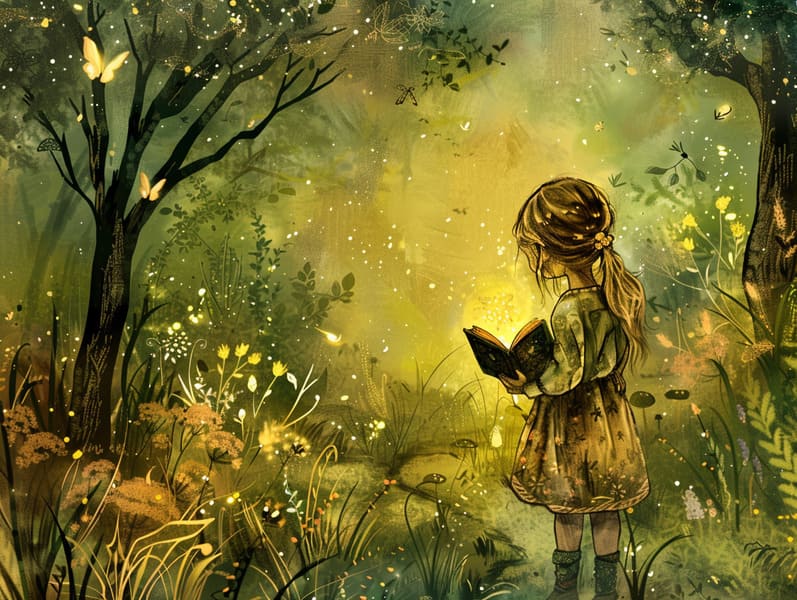The Origins of Fairy Tales and the Timeless Majesty.
The Origins of Fairy Tales and the Timeless Majesty.
Blog Article

Fairy tales have deep roots. These stories have been shared from one generation to the next far before they were ever published. They arose from a variety of civilizations, including Indigenous traditions. They were initially shared among mature audiences, often carrying themes and messages pertaining to the societal norms and beliefs of the time.
The renowned Brothers Grimm, Jacob and Wilhelm, were among the first to collect many of these beloved stories. Their volume, "Grimm's Story Collection," included classics like "Cinder Maid," "Hansel and Gretel," and "Little Snow White," which have since become mainstays in the world of beloved fairy tales. Similarly, H. C. Andersen's fanciful tales, such as "The Mermaid's Tale," and "The Little Duckling," have captured hearts worldwide, solidifying their place in the pantheon of treasured fairy tales.
Despite their historical roots, classic fairy tales remain as meaningful as ever, especially as bedtime stories for kids. These whimsical stories are now available in numerous formats, including artistically illustrated books, charming animations, and online fairy tales.
Their ongoing significance can be credited to several enchanting factors:
Key Lessons: Timeless fairy tales often offer important moral lessons. Narratives like "The Story of the Boy Who Cried Wolf" teach the merit of sincerity, while "The Tortoise and the Hare" underline the traits of persistence and unpretentiousness. These stories offer young readers clear distinctions between virtue and vice, forming their moral compass in a kind yet important way.
Compassion and Knowledge: Traditional fairy tales frequently feature heroes facing tests and troubles, provoking children to connect with their struggles and rally behind their triumphs. For instance, "The Tale of Beauty and the Beast" demonstrates the merit of looking past the exterior to know the true character of a character, encouraging empathy and awareness.
Cultural Recognition: Many fairy tales are deeply ingrained in the cultural contexts from which they grew. Immersing in these stories can provide intriguing perspectives into different historical contexts, strengthening a sense of global respect and discernment.
Inventiveness and Fantasy: The fantastical elements in traditional fairy tales—enchanted objects—engender children’s fantasy worlds. These stories bring readers to imaginary realms, unleashing fantasy-filled thoughts and a sense of marvel that remains a lifetime.
Classic fairy tales are not only spellbinding but also didactic. They serve as magical tools in fostering various thinking and feeling skills in the young. When old fairy tales are spoken out loud, they boost verbal development by introducing new words and intricate sentence structures. This practice also advances auditory skills and attention, as little ones listen intently, excited to see what happens next.
Furthermore, conversing about the themes and characters of ancient fairy tales can nurture analytical skills and reasoning skills. The young are shown to identify patterns, forecast, and comprehend cause and effect. These analyses also contribute to little ones communicate their thoughts and feelings, nurturing their emotional intelligence.
In today’s online age, the abundance of online fairy tales has made these fairy tales more within reach than ever. Digital sites and digital apps make available wide arrays of traditional fairy tales that can be looked at or listened to anytime, anywhere. Fairy tales spoken are particularly widespread, extending an enjoyable way for young ones to experience these magical stories. Narrated books and read-aloud videos lead characters and settings to life, often supplemented by magical audio effects and instrumentals that augment the storytelling experience.
The timeless fascination of classic fairy tales lies in their ability to evolve to current times while keeping hold of their underlying messages. Contemporary reimaginings of these narratives often showcase more multicultural protagonists and modern settings, making them familiar to today’s audience. However, the key lessons of braveness, compassion, and fair play remain unchanged, continuing to touch young readers of all ages.
Ancient fairy tales also offer a sense of protection and comprehensibility. They offer a organized narrative with a transparent here beginning, middle, and end, often ending with the settlement of conflicts and the triumph of truth over falsehood. This steadiness can be soothing for children, extending a sense of stability in an inconstant world.
Timeless fairy tales continue to mesmerize and enlighten new generations, maintaining their captivation and pertinence in modern society. As children's bedtime stories, they allow a perfect blend of captivation and insight, sustaining moral values, empathy, and creativity. The existence of online fairy tales and the well-received status of fairy tales spoken confirm that these old narratives remain available to new generations.
By retaining and passing on these narratives, we continue to commemorate the rich tapestry of fantasy and cultural heritage. Whether you are enjoying a richly illustrated book, delving into a digital collection, or playing an sound book, the splendor of Grimm's fairy tales is always within reach. These narratives demonstrate of the everlasting power of fairy tales and its ability to join us across centuries and lands.
No matter if you are discovering a colorful picture book, perusing a cyber collection, or listening through an spoken story, the charm of classic fairy tales is always within reach.
These tales teach us of the invariable essence of stories and its ability to draw us together across generations and cultures, forming a connection that captivates and teaches alike.